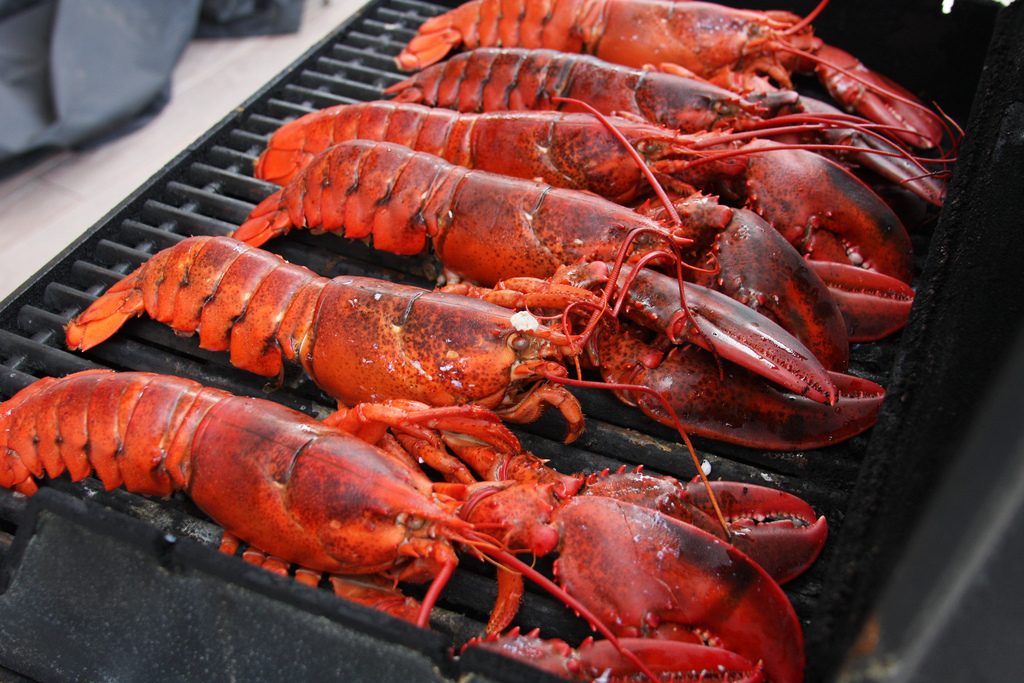Winners And Losers In Warming Northeast Waters
4:13 minutes

As the ocean continues to heat up under global warming, not every marine species will be affected equally. Writing in the journal Progress in Oceanography, a group of NOAA researchers found more evidence that species adapted to warmer waters will encounter an increase in habitat that’s a suitable temperature. The bad news? Other species will continue to decline as their range shrinks. Either way, fishing practices will have to adjust if we’re to continue sustainably harvesting the oceans. Study author Kristin Kleisner, now a senior scientist at the Environmental Defense Fund’s Fisheries Solutions Center, explains the advantages and disadvantages of the scenario facing fisheries off the Northeast Coast.
[Warming west coast waters upset food chains.]
Kristin Kleisner is a marine biologist and a consultant with the Fisheries Solutions Center at the Environmental Defense Fund. She’s based in Boston, Massachusetts.
IRA FLATOW: Now it’s time to play “Good Thing, Bad Thing”–
[MUSIC PLAYING]
Because every story has a flip side. The globe continues to warm and with it, the oceans. How will the warmer waters affect the fish we eat? Researchers working with NOAA have been looking at particular at the Northeast continental shelf, all those coastal waters from North Carolina to the Gulf of Maine.
As is a common theme with climate change, there’s some good news and some bad news. And my guest is Dr. Kristin Kleisner, Senior Scientist with the Environmental Defense Fund’s Fishery Solutions Center and lead author on the research. She’s based in Boston. Welcome, Dr. Kleisner.
KRISTIN KLEISNER: Thanks, Ira. Thanks for having me.
IRA FLATOW: It sounds like there’s some good news here if we like lobster or spiny dogfish.
KRISTIN KLEISNER: That’s right. Well, we did a study with colleagues at NOAA and The Nature Conservancy to try to understand what we call suitable thermal habitats for these species. So it’s basically a picture of the water temperature and the depths that individual species are most commonly associated with.
And the upshot was that we found some potentially significant increases for many species, including things like summer flounder, striped bass, and Atlantic croaker. Those are all species that are currently caught off the more southern portions of our coastline and they’re associated with warmer waters. And these guys might do pretty well as climate changes and new areas of suitable thermal habitat open up for them.
IRA FLATOW: But the news isn’t so good for other fish we’d like to see more of.
KRISTIN KLEISNER: Right. On the flip side, we saw that the picture was not so rosy for species like Atlantic cod, Canadian redfish, and some of the other species that are found further north on the shelf, in the Gulf of Maine, for example. And of course, that’s not to say that these species won’t have plenty of suitable water temperatures off the shelf, maybe in deeper water or maybe further north outside of our study area.
And again, it’s good to remember that what we’re doing is creating a picture of suitable thermal habitat that’s defined primarily by water temperature and depth. And those are both really, really important factors for fish. But there are definitely other factors that are important that our study didn’t account for, things like ocean acidification, which could strongly affect species like lobsters, which did really well in our study, or other animals with shells or also species interactions. That could be a pretty big wild card.
IRA FLATOW: Mm-hm. Assuming we can accurately predict where the fish are going to move as the ocean warms, why don’t we just go follow them and fish them there?
KRISTIN KLEISNER: Yeah– fish them there? Well, some fishermen may choose to do that, but then they’re looking at traveling potentially quite a distance from their home ports– maybe spending more fuel to catch the species they’ve traditionally fished. But there’s going to be new species showing up off of our coast and that could present some new opportunities. But I think anglers and fishers are going to need to be able to make modifications to their gear maybe to catch these new species or also have the ability to obtain quotas or permits to be able to go and fish these species.
IRA FLATOW: Yeah. Your research looks at, as I said, the Northeast continental shelf. But I’m imagining it could be applied to a whole bunch of other places.
KRISTIN KLEISNER: Yeah, it definitely could. So our study used trial survey data, but it also used a very high-resolution climate model, which is a little bit different than a lot of the research that’s being done with the IPCC models. It’s 1/10 of a degree resolution in the ocean so that’s really, really fine-scale right now. And it gives us a very clear picture of the oceanographic processes on the shelf. And that’s what we use for our temperature predictions in the future to be able to forecast the best areas for these species in terms of temperature.
IRA FLATOW: Well, thank you very much, Dr. Kleisner. Have a good weekend.
KRISTIN KLEISNER: Thank you very much.
IRA FLATOW: Kristin Kleisner, a Senior Scientist with the Environmental Defense Fund’s Fishery Solutions Center.
Copyright © 2017 Science Friday Initiative. All rights reserved. Science Friday transcripts are produced on a tight deadline by 3Play Media. Fidelity to the original aired/published audio or video file might vary, and text might be updated or amended in the future. For the authoritative record of ScienceFriday’s programming, please visit the original aired/published recording. For terms of use and more information, visit our policies pages at http://www.sciencefriday.com/about/policies/
Christie Taylor was a producer for Science Friday. Her days involved diligent research, too many phone calls for an introvert, and asking scientists if they have any audio of that narwhal heartbeat.